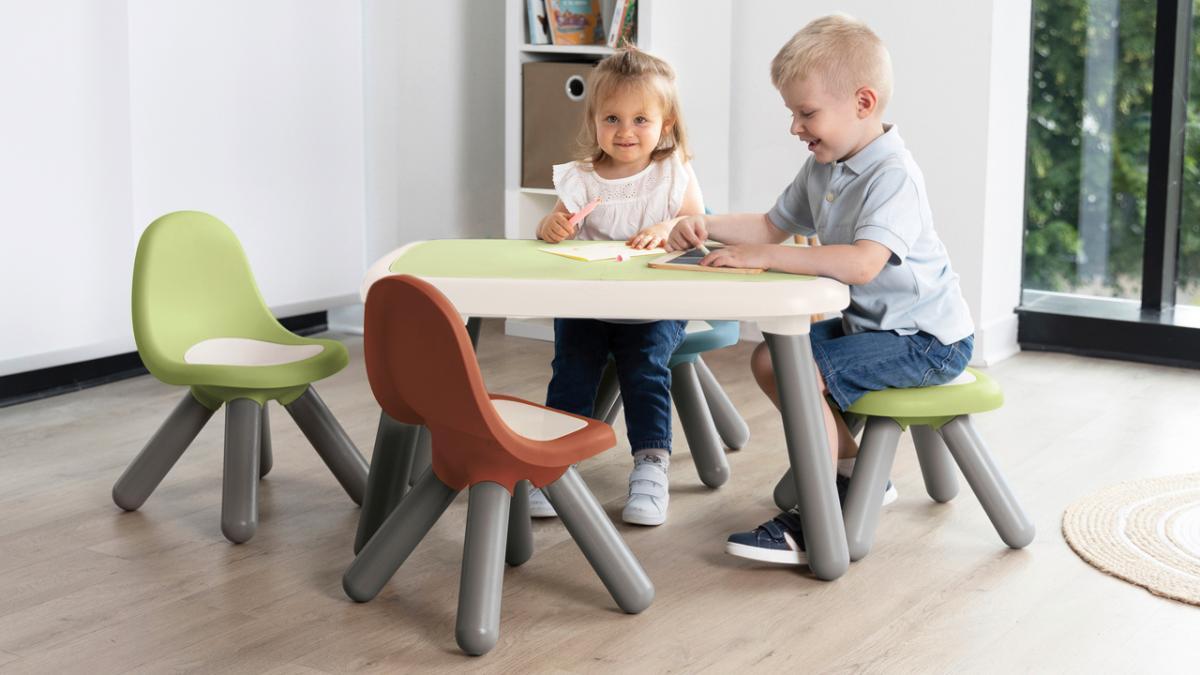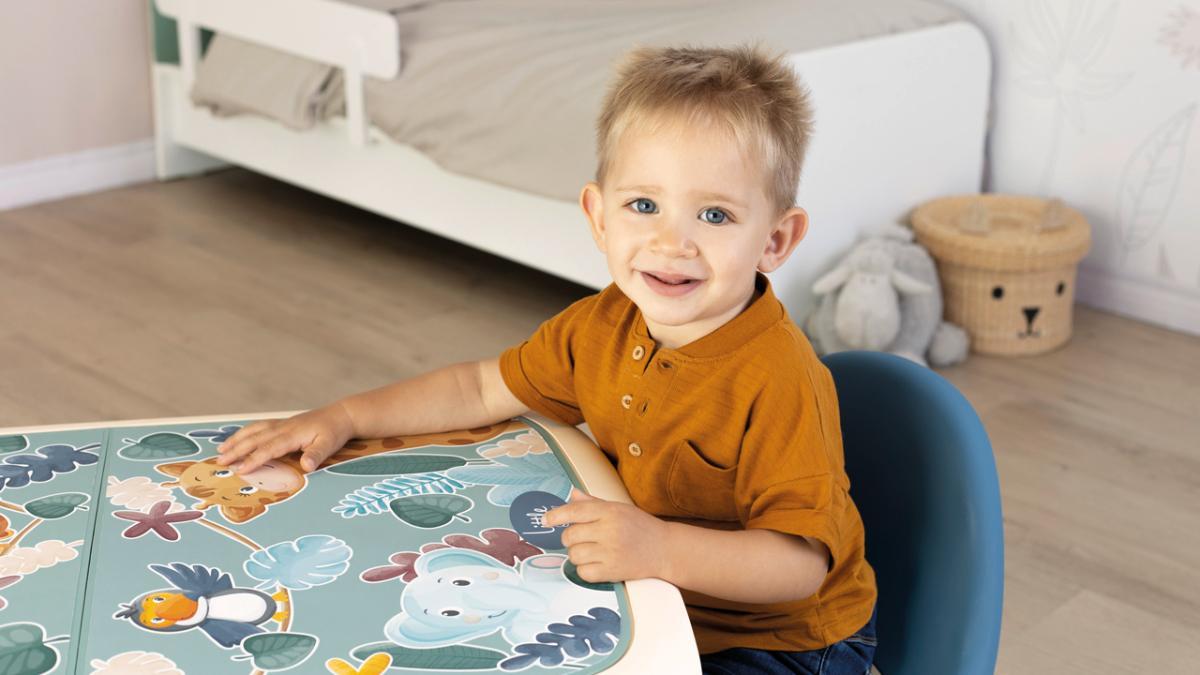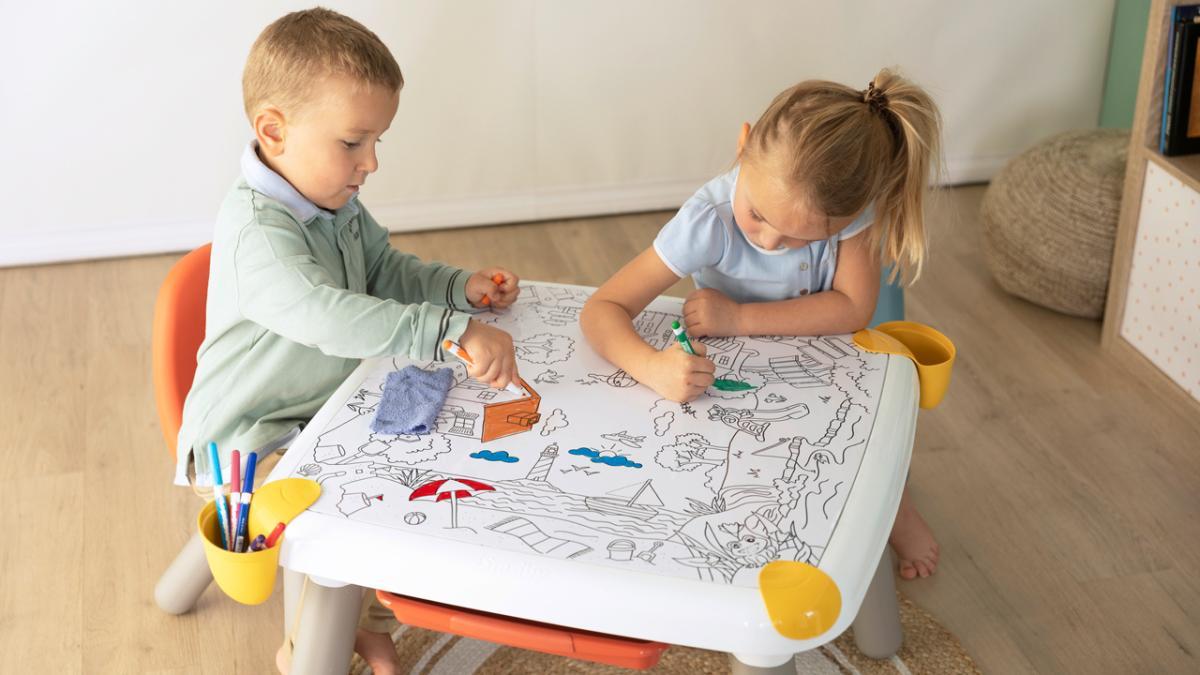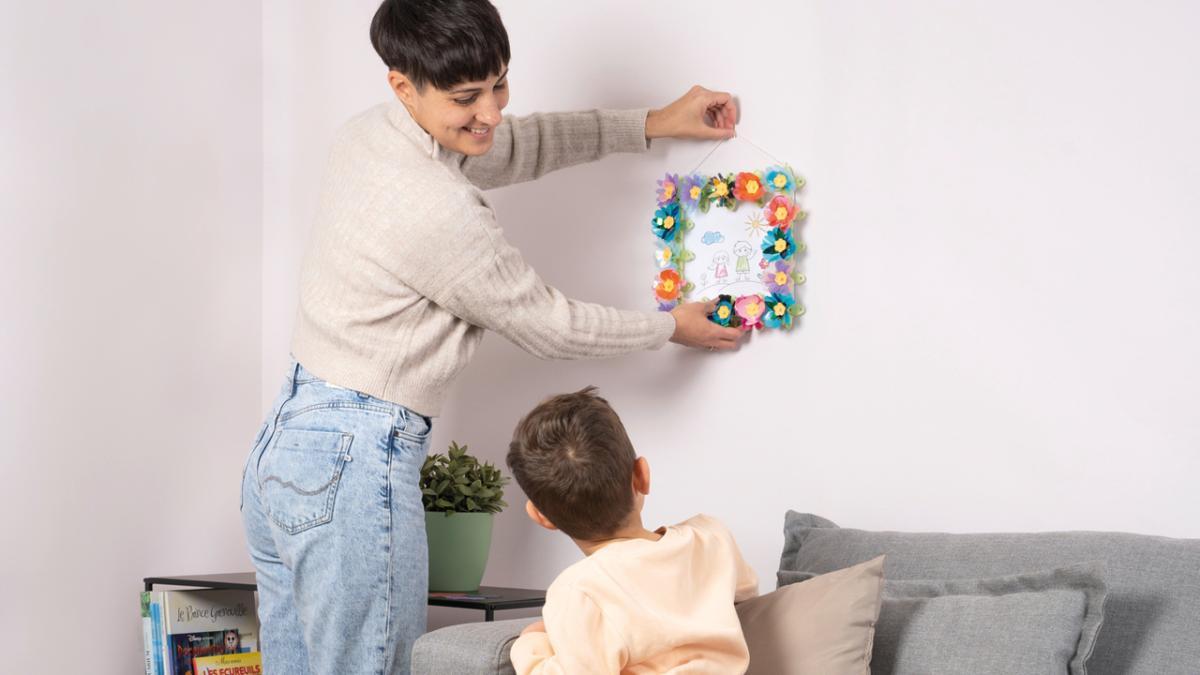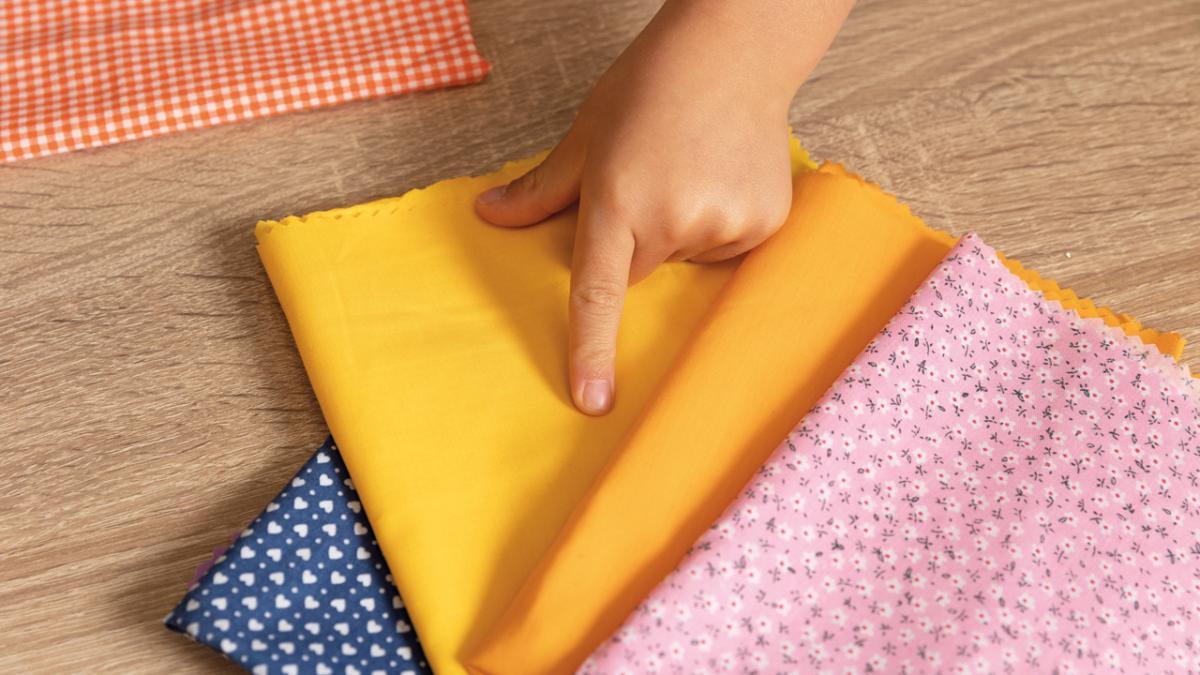What belongs in a children's room

-
By
Petra J.
What belongs in a children's room? Smoby helps
The children's room is perhaps the most important place in a child's life. It combines several important tasks: ideally, it is a playground, dreamland, retreat, learning environment and oasis of well-being all in one. But what does a children's room need to fulfill this purpose?
In this article, we provide practical tips on children's room furnishings and show what you should look out for when furnishing a children's room.
Checklist for the children's room: the most important equipment at a glance
Before we present specific ideas for children's room furnishings and take a closer look at age-appropriate children's room furnishings, we would like to give you an overview of the most basic "children's room must-haves":
- Bed
- Closet
- Table and chair
- Shelves (e.g. for books)
- Toys
- Storage space for toys
(e.g. boxes, drawers and cupboards) - lighting
- Carpets, curtains and decorations

Why is a well-designed children's room important?
Alongside school and kindergarten, the children's room is the room where children generally spend most of their time. So it goes without saying that it makes sense to design this room beautifully. The question "What belongs in a child's room?" should therefore not only be considered from a purely practical perspective. A child's room must, of course, be equipped with the things they need to play, learn or sleep. But it should also radiate a certain coziness so that the child can feel comfortable.
Age-appropriate children's room furnishings and design
Ideally, the children's room changes as the child grows up. After all, the requirements that the room has to meet change as the child grows. A baby's nursery should include a changing table, a seat for feeding the baby, baby toys and, if necessary, a crib.
And what belongs in a schoolchild's bedroom? A crib and changing table are clearly out of place here. Instead, pre-school and primary school children need a desk with a comfortable chair, a crib that offers enough space and perhaps a cozy reading corner or a play rug where they can really spread out. In addition, the growing child may want to help design their room according to their own ideas and, for example, hang up posters or put self-painted pictures on the walls.

The correct answer to the question "What belongs in a child's room" therefore depends entirely on the age of the child. This also means that parents must be prepared to redesign the children's room over time, because sooner or later the child will outgrow the "initial furnishings".
What you should look out for in children's room lighting
Lighting plays an important role when furnishing children's rooms. Brightness is crucial, as bright rooms are inviting and make learning and playing easier on the eyes. A child's room should have a natural light source, such as a window, and also be equipped with lighting for the evening and night. Older children who do homework or like to draw and do handicrafts at the table need a sufficiently bright desk lamp that can be flexibly adjusted. Night lights are often indispensable for younger children so that they don't have to fall asleep in complete darkness.
Children's room furnishings with furniture for children from Smoby
Furniture is the basic building block of a child's room, so to speak, which is why you should choose it carefully. This is especially true for tables and chairs. Our tip: opt for robust children's furniture that is specially designed for children.
At Smoby you will find ergonomically designed children's chairs, children's tables and desks. The child-friendly pieces of furniture with a cheerful look are easy to clean and so durable that they can be used for generations.
While the chairs are comfortable to sit on, your child can do crafts, do puzzles, create coloring pages or make their first attempts at writing with our tabletop to their heart's content.
Children's room design - but safe!
Where children play, learn, sleep and live, safety is always a top priority. But what does a child's room need to be safe? The most important thing is a smoke detector and securing sockets. If the children's room is on a higher floor, you should also secure window handles that can be reached by the child. We also recommend stoppers for doors and drawers to prevent your child from pinching their little fingers.
How to set up a play area in the children's room
It makes sense to divide children's rooms into areas such as sleeping, learning and play zones. With a little creativity, this can also be achieved in small rooms. For example, you can separate the sleeping area from the play area with an elongated shelf that also provides storage space for toys, or use a curtain to separate the learning and play zones. This division has two major advantages: Firstly, children find it easier to settle down in bed or concentrate at their desk if these areas are not also used for play. Secondly, a clear room structure makes tidying up much easier.
This brings us to the subject of tidiness: all parents are familiar with chaos in the children's room. Short-term chaos is not a problem, but a basic order is important so that your child feels comfortable in the long term and is not stressed by constant sensory overload. The best way to keep things tidy is with a practical storage system in which every toy has its own place. Small toys, such as the electronic supermarket checkout from Smoby, can be easily stored in boxes and crates. In small children's rooms, storage items that can be integrated into the furniture, such as flat boxes under the bed or stackable boxes that take up little space, are ideal.
And what else belongs in a child's room? At Smoby, you can discover educational toddler toys from 1 year and 2 years, exciting role-play toys as well as baby dolls and doll accessories . If you are worried about cluttering up your child's small play area with toys, outdoor toys are an excellent alternative. Your child can play with these toys outdoors and you can easily store some of them outside. Or you can equip your child with a cool children's vehicle that they can race around on play streets or on your walks together.
Transform the children's room into a place of comfort with colors and decorations
If you want to make your child's bedroom a real feel-good place, you should take a closer look at colors and decorations.
You can safely leave outdated gender stereotypes behind: "girls' rooms" don't necessarily have to be painted pink and not every boy likes blue. If your child is old enough, you can involve them in the selection of colors and decorative objects so that the children's room matches their personal taste as well as possible.
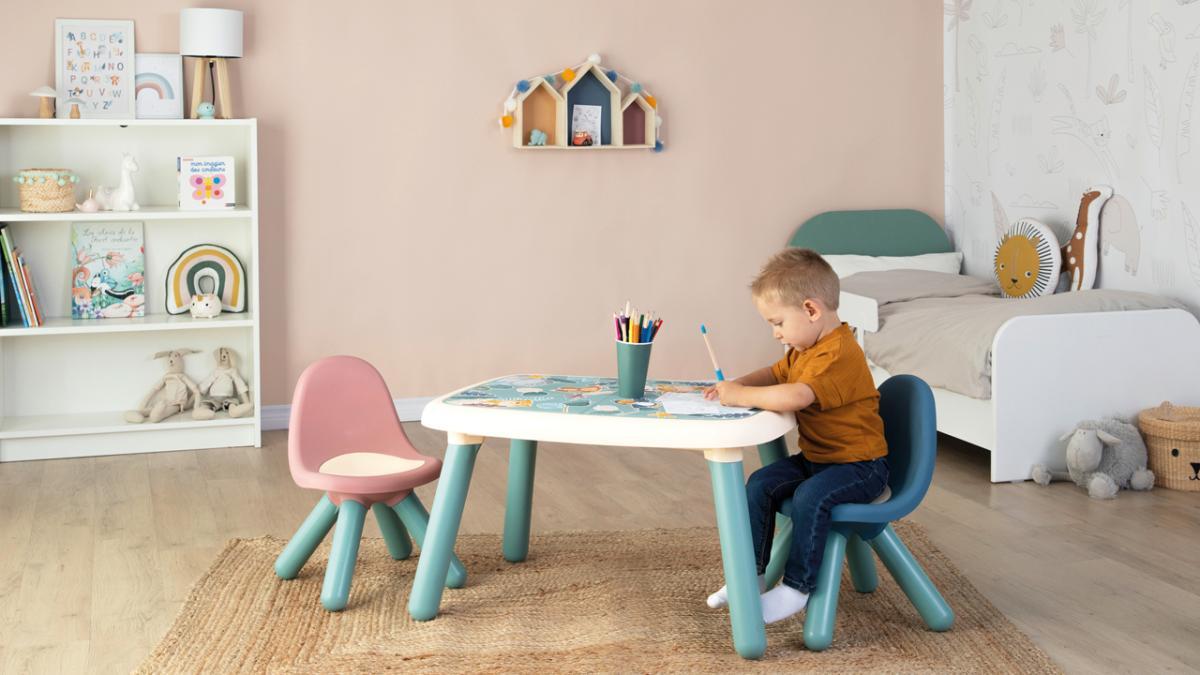
Bring color into the nursery
Colors strongly influence the mood and atmosphere of a room. But be careful: too many colors make the room look chaotic and often smaller.
Before you start painting, plan a color scheme that incorporates the colors of the furniture and flooring. A wall color that matches white furniture and a grey carpet could look inharmonious with wooden furniture and parquet flooring.
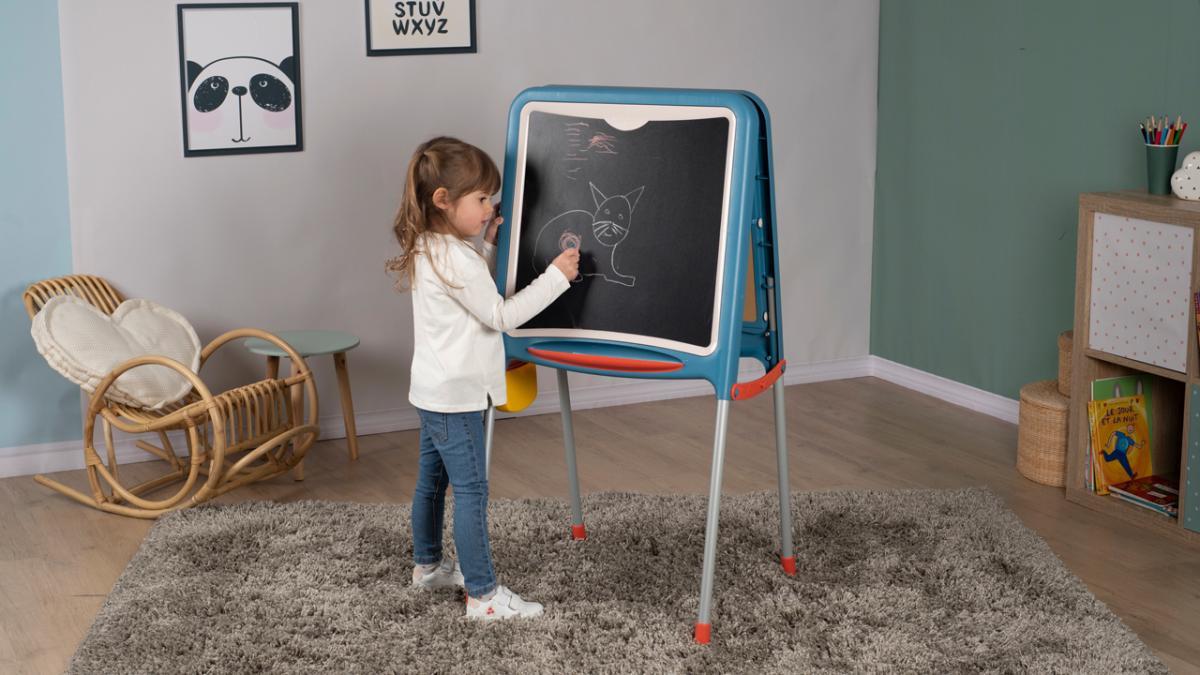
You should preferably use light colors, especially in rooms with little space. More spacious rooms with high ceilings, on the other hand, can also tolerate stronger color accents. You can find inspiration for color concepts online, but a visit to your local DIY store is also a good idea. There you can experiment with different color cards and get professional advice if necessary.
Give the children's room character with the right decorations
Decorations are the "icing on the cake" in the children's room and give it a personal touch. Rugs, cushions and curtains increase the cosiness factor and should match the color scheme. Decorative objects that reflect the child's interests are also a good choice.
A car-loving child could display their model cars on a wall shelf, while dog fans would love a wall tattoo with a dog motif or a matching dog bed for their favorite plush dog.
If your child likes to be creative, frame their best artwork and crafts and give them a place of honor on the walls. Older children who like nature might enjoy having their own non-toxic houseplant that they can look after themselves. As you can see, decorating a child's room is very individual.
The answer to the question "What belongs in a child's room?" is therefore: anything that makes your child feel comfortable and safe.

